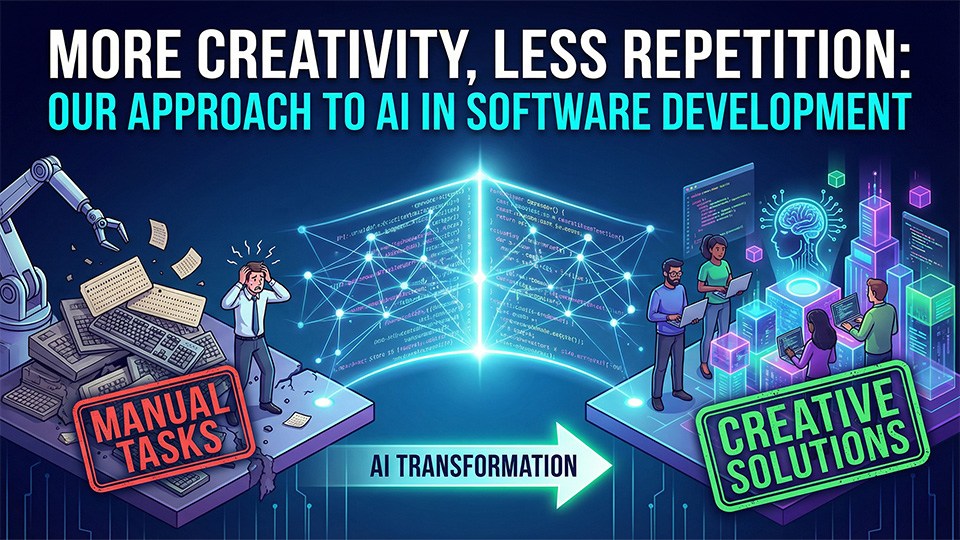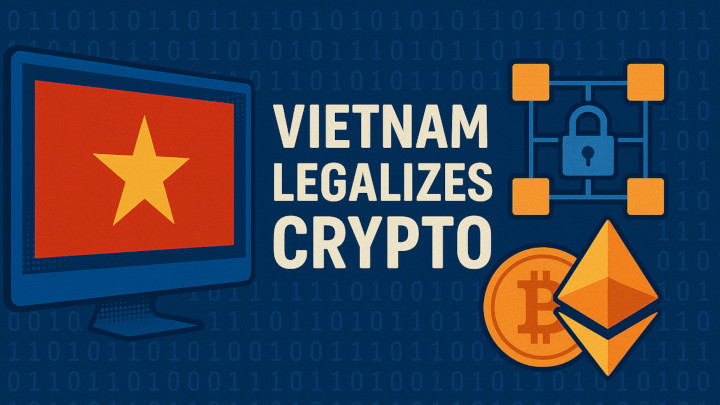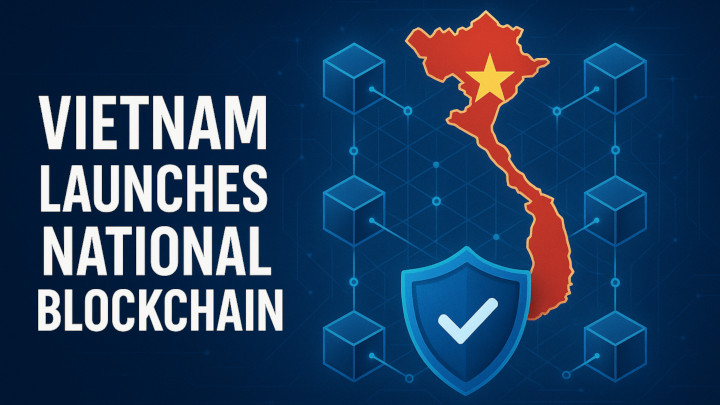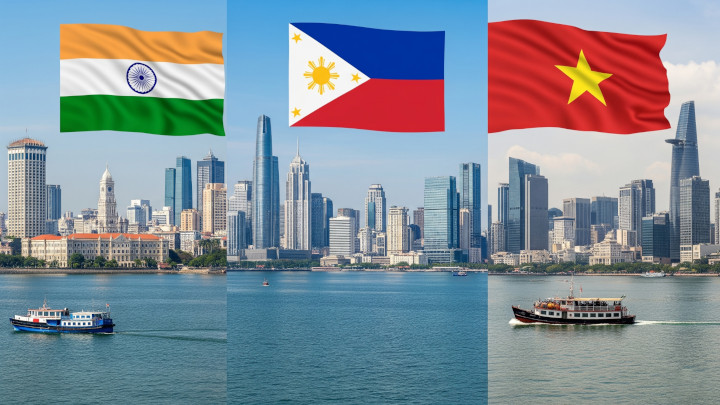November 30, 2025
How New U.S. H-1B Visa Restrictions Favor Vietnam’s IT Outsourcing Industry
Introduction: Tariffs, Talent and the Hidden Cost of Skilled Services
In 2025, the United States has deployed a variety of protectionist measures — such as the tariffs introduced under Donald Trump — to shield its domestic goods-market from international competition. These trade tools affect goods, not services, and although they are disruptive, they do not directly constrain the delivery of IT or software-services from abroad.
But another policy shift is now forcing U.S. companies to reconsider how and where they source skilled tech talent. The new one-time US $100,000 fee imposed on each new H‑1B visa application (for petitions filed after mid-2025) dramatically raises the cost of hiring foreign workers to onshore US jobs.
For U.S. companies, this has two immediate consequences: increased head-costs for talent in the U.S., and greater uncertainty in staffing critical roles. Those pressures create a “push” away from traditional on-shore foreign-talent hiring — and open up a strong “pull” for stable, cost-effective offshore alternatives.

Vietnam’s IT-outsourcing sector is exceptionally well positioned to benefit from this shift. In the following sections we explore why and how this is relevant to clients of Dirox — and what it means for your next software development partnership.
What Is the H-1B Visa, and Why It Matters
The H-1B visa is a U.S. work visa that allows American companies to hire highly skilled foreign professionals — especially in fields like IT, software engineering, and data science — when qualified local talent is unavailable.
Each year, around 85,000 new H-1B visas are issued through a lottery system, and the majority go to technology companies that rely on international expertise to build and maintain critical systems.

For decades, this program has been a cornerstone of how U.S. firms fill their talent gaps, enabling them to bring in engineers from countries like India, China, and Vietnam. However, the new $100,000 petition fee — introduced in 2025 — fundamentally changes the cost structure of this model.
What was once a manageable expense has now become a major financial barrier, especially for mid-sized firms and startups. As a result, companies that previously relied on bringing talent to the U.S. are now looking outward — turning to offshore development hubs like Vietnam to access the same skills at a fraction of the cost.
What the H-1B Changes Mean for US Companies
A. The cost and uncertainty increase
- With the new $100K fee (for new H-1B petitions), many U.S. employers face a cost that rivals (or exceeds) the salary of the worker they intend to bring in.
- As one analysis from Forrester puts it: “technology service delivery costs will go up… delivery models will shift toward offshore execution.”
- Legal and immigration uncertainty is rising: The fee applies only to new petitions, but policy interpretation is in flux.
B. On-site staffing becomes less viable
- For roles traditionally filled via H-1B on U.S. soil, companies now have to ask: “Do we absorb this extra cost, or do we look elsewhere?”
- Projects requiring collaborative on-site presence (e.g., frequent face-to-face, high innovation tasks) may become cost-prohibitive.
C. Offshore/leverage models gain strategic weight
- With on-shore foreign talent becoming more expensive and higher risk, global delivery models shift more toward either near-shore or off-shore structures.
- This means companies can keep budgets under control while still accessing highly skilled talent — a compelling value proposition for decision-makers.

Why Vietnam Benefits: The “Pull” Factors
A. Economic & political stability
Vietnam has maintained strong growth, even with global headwinds: GDP growth of ~7.5 % in the first half of 2025; FDI inflows of ~$21.5 billion in H1.
This signals stability and reliability — crucial for companies looking to form long-term outsourcing partnerships, not just short-term cost cuts.
B. Geopolitical neutrality & China-Plus-One advantage
Vietnam sits outside the direct U.S.–China trade conflict zone and is increasingly positioned in the “China + One” strategy of Western corporations seeking to diversify supply chains. This de-risking trend favours Vietnam as a tech and services hub for firms wanting to avoid exposure to China-centric risks.
C. Mature, cost-effective IT-outsourcing sector
- Vietnam enjoys a large, young, and increasingly skilled tech workforce — able to service Western clients at lower cost. For example, data reports indicate that by 2028 the Vietnamese IT-outsourcing market is projected to reach US$1.28 billion.
- When the cost of a U.S. visa petition can eclipse six-figures, the business case for hiring in Vietnam becomes compelling from a cost/benefit standpoint.
What This Means For Your Outsourcing Strategy With Dirox
1. Re-evaluate the staffing model
Instead of assuming on-shore staffing for every role because “it must be local”, U.S. clients should ask: Which roles must be on-site and which can be delivered offshore? For many software, mobile, cloud and digital-transformation tasks, an offshore team in Vietnam can deliver equal (or higher) quality at significantly lower cost.
2. Leverage stability to move beyond commodity tasks
Vietnam isn’t just for low-cost labour anymore. With Dirox’s experience, you can assign your feature development, cloud migration, long-term maintenance, mobile apps or AI/ML components to Vietnam — rather than limiting yourself to low-value work. This taps into the “pull” advantage while your U.S. budget handles the strategic architecture, client-facing roles, and critical decision-making closer to your market.
3. Mitigate risk and enhance flexibility
With visa-regime uncertainty in the U.S., offshoring to Vietnam reduces the exposure to immigration/regulatory disruptions. It also gives you access to a larger talent pool with predictable cost structure — a hedge against the rising costs of on-shore staffing.
4. Position for scale and agility
As U.S. companies re-tool their delivery models in response to the H-1B shift, being already hooked into a mature partner like Dirox in Vietnam gives you agility. You can ramp up teams, deploy new features faster, and deliver global-class output without the visa-bottleneck or cost shock.
Key Considerations & Best Practices
To make the most of Vietnam’s advantages — and ensure your outsourcing strategy delivers lasting results — U.S. companies should approach offshoring with structure, clarity, and long-term vision. Here are a few best practices to guide your transition:

- Define clear on-shore vs off-shore split: Identify strategic roles (on-site) vs execution roles (off-shore).
- Ensure strong governance and communication: Managing a remote Vietnamese team needs disciplined processes, tooling, cultural alignment — all of which Dirox specialises in.
- Focus on value, not just cost: Lower cost is attractive, but the real gain is in speed, quality, innovation and scalability.
- Plan for long-term partnership: With Vietnam’s stability and growth trajectory, you can build multi-year programmes — not just stop-gap staffing fixes.
- Stay aware of geopolitical/tariff risk: While Vietnam offers benefits, trade conditions are not static. A holistic sourcing strategy should include monitoring tariff/trade shifts.
Conclusion & Call to Action
The recent tightening of the U.S. H-1B regime is a wake-up call for tech-service-buyers: the old model of bringing in foreign talent via U.S. visas is becoming more expensive and more risky. At the same time, the alternative destination — Vietnam — is rising in strategic appeal.
For U.S. clients seeking to stay competitive, control costs, and accelerate delivery, outsourcing with Dirox in Vietnam is not just a backup plan — it’s a smarter strategic move.
👉 Ready to turn the shifting talent landscape into your advantage?
Connect with Dirox today to explore how our Vietnam-based teams, governance models and delivery excellence can help you restructure your software development strategy for the next decade.





























.svg)













